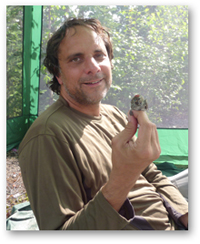 Human beings do not get avian malaria, which is a good thing for the human beings in Alaska. Avian malaria is, however, caused by a parasite that is closely related to the one that causes human malaria, and that might be a good thing, too. Of course, the news for birds is bad all around.
Human beings do not get avian malaria, which is a good thing for the human beings in Alaska. Avian malaria is, however, caused by a parasite that is closely related to the one that causes human malaria, and that might be a good thing, too. Of course, the news for birds is bad all around.
A study by San Francisco State University researchers, published in the journal PLoS ONE, collected blood samples from birds in Alaska over a latitudinal gradient in Alaska, from 61°N to 67°N, and found the avian malaria parasite as far north as 64°N.
This is a huge threat to the Arctic’s rich bird life, because the birds there have never been exposed to avian malaria and they may be highly susceptible to it, says San Francisco State University Associate Professor of Biology Ravinder Sehgal, one of the study’s co-authors.
The finding may supply medical researchers with a valuable model of human malaria and climate change. The spread of malaria (the human kind) is one of the most threatening aspects of climate change on human health.
For anyone charged with managing populations of wild birds — whether they are songbirds, water fowl or upland game birds, the presence of avian malaria at up to a latititude of 64°N is worth noting in hunting plans, endangered species recovery plans, and when investigating disease outbreaks in birds.
Read the PLoS ONE paper, here. (This is an open access journal.)
Read the SF State U press release, here.
Read a brief analysis of the findings in Climate Central, here.
Photo: SF State Associate Professor of Biology Ravinder Sehgal holds a Common Redpoll, one of several bird species in Alaska researchers discovered were infected with malaria. Credit: Ravinder Sehgal, SF State.
